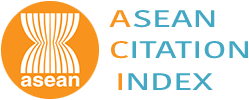Indications and Complications of Orthopedic Hardware Removal in an Indonesian Tertiary Hospital: A Descriptive Study
Shadrina Affifa Azzahra, Raden Andri Primadhi, Titing Nurhayati, Muhammad Naseh Sajadi, Achadiyani Achadiyani
Abstract
Objective: To acquire clinical data regarding indications of implant removal and complications in orthopedic metal implant removal.
Methods : This was a cross-sectional observational descriptive study using patient medical records. The inclusion criterion was all patients who underwent orthopedic metal implant removal during 2018-2020 while the exclusion criterion was unintentional implant removal due to subsequent injury or loosening. Data regarding anatomic regions, indications, and complications were collected and presented in tables.
Results: In 112 patients participated in this study consisting of 75 (67%) men and 37 (33%) women, the implants were mainly located in thigh, lower leg, and ankle (53% combined). The most common indication for metal implant removal was conversion (31%), followed by infection (25%) and patient's request (20%). The only complication observed in orthopedic metal implant removal in this study was disturbed wound healing in a small percentage of the patients (16%). Most patients (84%) did not experience any complication due to metal implant removal.
Conclusions : Indications for metal implant removal may vary, with or without symptoms. Disturbed wound healing is a complication observed in metal implant removal. Despite the advantages of removal, further analysis and guidelines are needed to avoid unnecessary hardware removal considering the risk of complications.
Keywords
Complication; hardware; indication; removal
DOI:
https://doi.org/10.15850/ijihs.v10n1.2695 Article Metrics
Abstract view : 752 times
PDF - 1112 times
This Journal indexed by
IJIHS is licensed under a Creative Commons Attribution-NonCommercial 4.0 International License <div class="statcounter"><a title="web analytics" href="http://statcounter.com/" target="_blank"><img class="statcounter" src="//c.statcounter.com/10168322/0/36af1ad9/0/" alt="web analytics"></a></div> View My Stats






